Hispanic Heritage Month (September 15-October 15) is a celebration of the Hispanic and Latino community’s contributions to the United States. Now in its 36th year, then-President Ronald Reagan signed into law the 30-day celebration in 1988 after it was originally established as Hispanic Week in 1968. In this blog post, we’ll recognize several of the newest Hispanic designers and how this new cadre of Latinos are slowly making a name for themselves. Many do so through clothes that honor their roots.
DID YOU KNOW?
‘Hispanic’ and ‘Latino’ are often used interchangeably. To some, they mean two different things, i.e. ‘Hispanic’ referring to people who speak Spanish or who are descended from Spanish-speaking populations, while ‘Latino’ refers to people who are from or descended from people from Cuba, Mexico, Puerto Rico, South or Central America. However, in the U.S. Hispanic Heritage Month includes both Hispanics and Latino.
By celebrating Hispanic Heritage Month, we recognize and appreciate the significant role that Hispanics and Latinos have played in shaping the cultural, educational, economic, and social fabric of not just the U.S. but of the world at-large. Their design traditions are a constant source of inspiration, often incorporating vibrant colors, intricate patterns and bold shapes. These traditions tell stories of resilience, history, sustainability and cultural identity.
Brenda Equihua – Mexican-American

Brenda Equihua’s Mexican-inspired cobija blanket coats & jackets (Image Credit: Brenda Equihua.com)
Brenda Equihua grew up in a working-class Mexican household in Santa Barbara. After graduating from Parsons School of Design, she spent years working as a luxury women’s wear designer for brands like Monique Lhuillier, Tadashi Shoji, Juan Carlos Obando before opening her own label where she turned Mexican cobijas, (San Marcos blankets often thought of as tacky with images of Aztec warriors, Virgin Marys, lions, pandas and unicorns) into luxury-priced coats and jackets. For Equihua, these repurposed blankets felt fresh and old, new and nostalgic and their over-the-top flashiness caught the attention of celebs like Lil Nas X and Young Thug. Her work is considered artifacts of culture.
Jonathan Cohen- Mexican-American
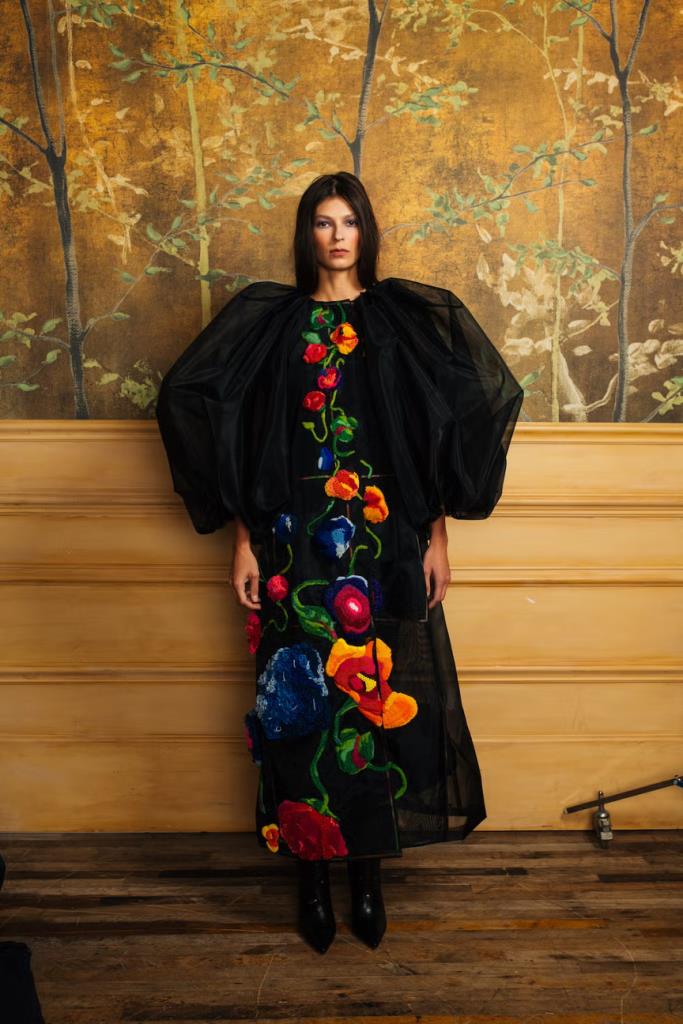
Jonathan Cohen’s embroidered tulle coat Spring 2024 (Image Credit: JonathanCohen.com)
Born in San Diego to Mexican-Jewish parents, Jonathan Cohen grew up “straddling” both sides of the border. His collections are often inspired by his Mexican heritage, other times, it happens subconsciously. For his Spring 2024 collection, he did an embroidered tulle coat in collaboration with Indian ready-to-wear label Péro. Cohen noted that “When the coat came back, everyone commented that it would be something that Frida Kahlo would wear. I wasn’t thinking of Frida or Mexico when making the coat, but she (and my heritage) are so embedded in me, that it just naturally comes out”. Cohen is among the new generation of designers that offer both creativity and innovation through upcycled products. Cohen’s ensembles have been worn by actors Lupita Nyong’o, Kate Hudson and Former First Lady Michelle Obama.
Isabel Perez – Quito, Ecuador
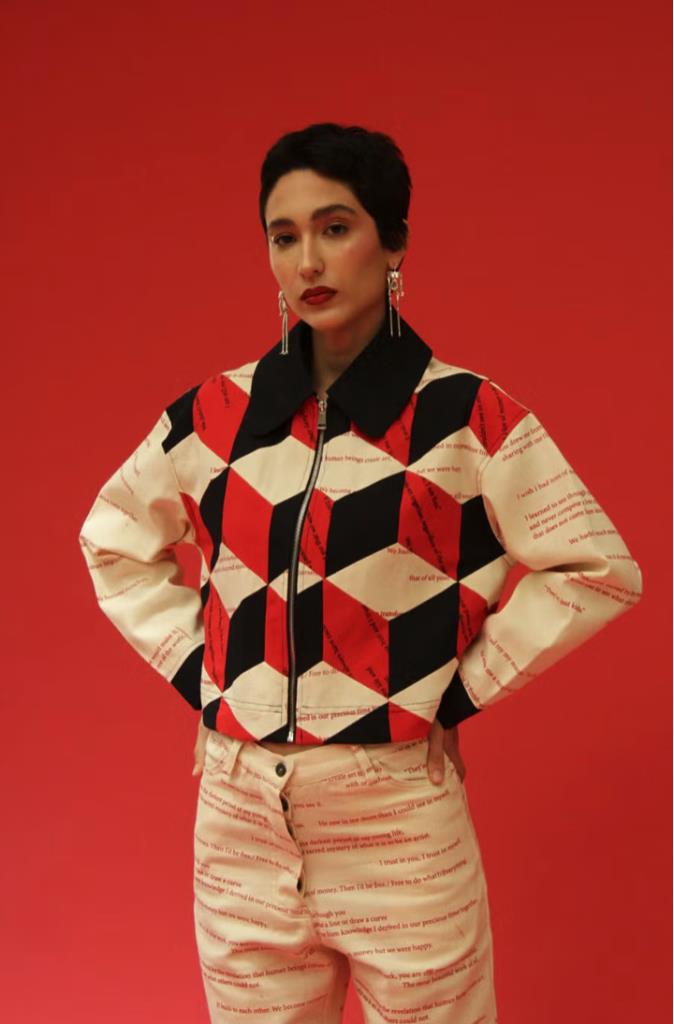
Isabel Perez, Hera- patchwork ‘Brooklyn Jacket’ inspired by Patti Smith’s book, Just Kids (Image Credit: harpersbazaar.com)
Isabel Perez is the founder of Hera Studio, an Ecuadorian brand that is designed and manufactured in Quinto, Ecuador using natural fibers, deadstock fabrics and vintage textiles from the 50’s, 60’s and 70’s. Originally trained as an architect, Perez pivoted to fashion choosing sustainable design in bright colors that reflect her Ecuadorian culture. She believes that to be a successful fashion brand, you don’t need to be in a major fashion capital. Perez is also part of Semiya, a fashion marketplace that proudly represents Latin American talent.
Johanna Ortiz – Cali, Colombia
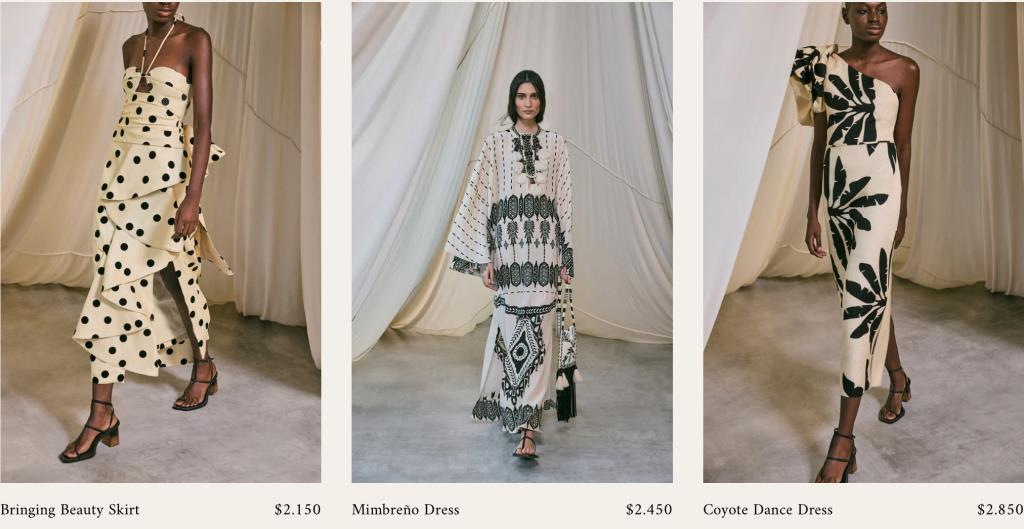
Johanna Ortiz Columbia-inspired collection 2024 (Image Credit: JohannaOrtiz.com)
Johanna Ortiz is a Columbian-born designer who studied fashion design in Florida before rounding out her formal fashion design education in New York and Paris. She returned to Colombia with a thirst for creating her signature ruffles and off-the-shoulder silhouettes that capture the spirit of Latin America. Ortiz boasts that 90% of her collection is made in house, thus fulfilling her mission to produce ethically and locally. To give back to the community, her label places high priority on working with indigenous communities and women in Colombia. In 2016, she launched Escuela Johanna Ortiz, an onsite training program to develop professional-level seamstress and high-end embroidery skills to enhance talent and promote the inclusion of vulnerable communities to improve their quality of life and create personal empowerment.
Annaiss Yucra – Lima, Peru
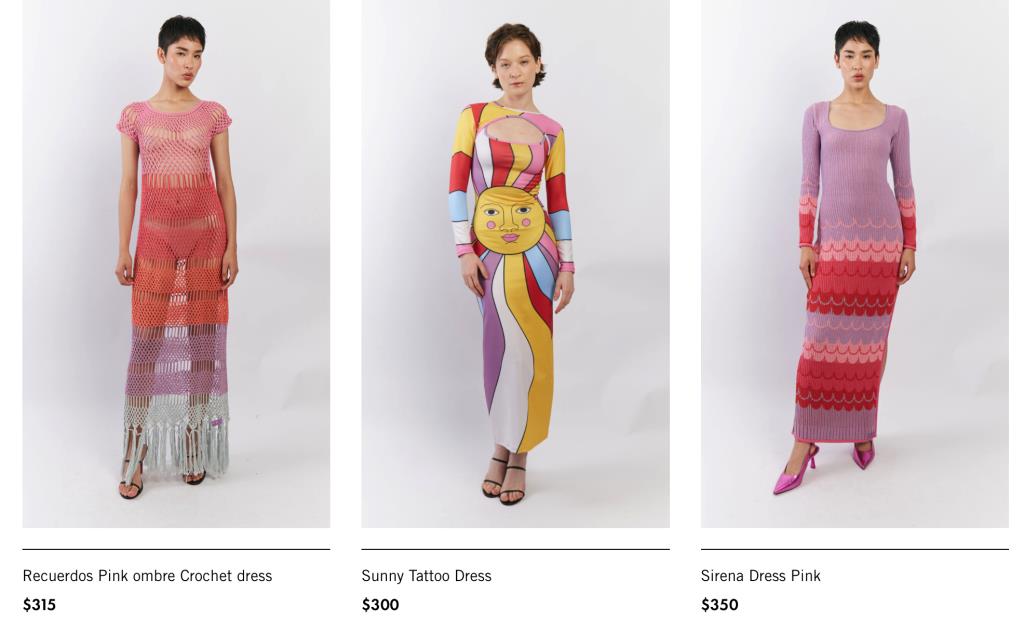
Annaiss Yucra’s Peruvian -inspired collection (Image Credit: AnnaissYucra.com)
Isabel Annaiss Yucra Mancilla was born and raised in Lima, Peru, studied at Central Saint Martins and graduated with honors from Nottingham Trent University. Annaiss made a name for herself globally thanks to her international recognition in various competitions and the social programs in Peru that she became involved in, such as creative workshops with indigenous communities, men in prison and aspiring students. She is a third-generation indigenous woman which has made an impact on her as a young child. Her respect to the Pachamama (Mother Earth in Quechua) and her love of Peruvian textile work is a constant source of inspiration. In collaboration with a small community in the highlands of Peru, whose livelihood is being negatively affected by the growth of fast fashion, her brand, Isabel Annaiss, creates up-cycled textiles woven from a wide range of textile waste collected from her family-owned factory.
Willy Chavarria – Irish & Mexican-American
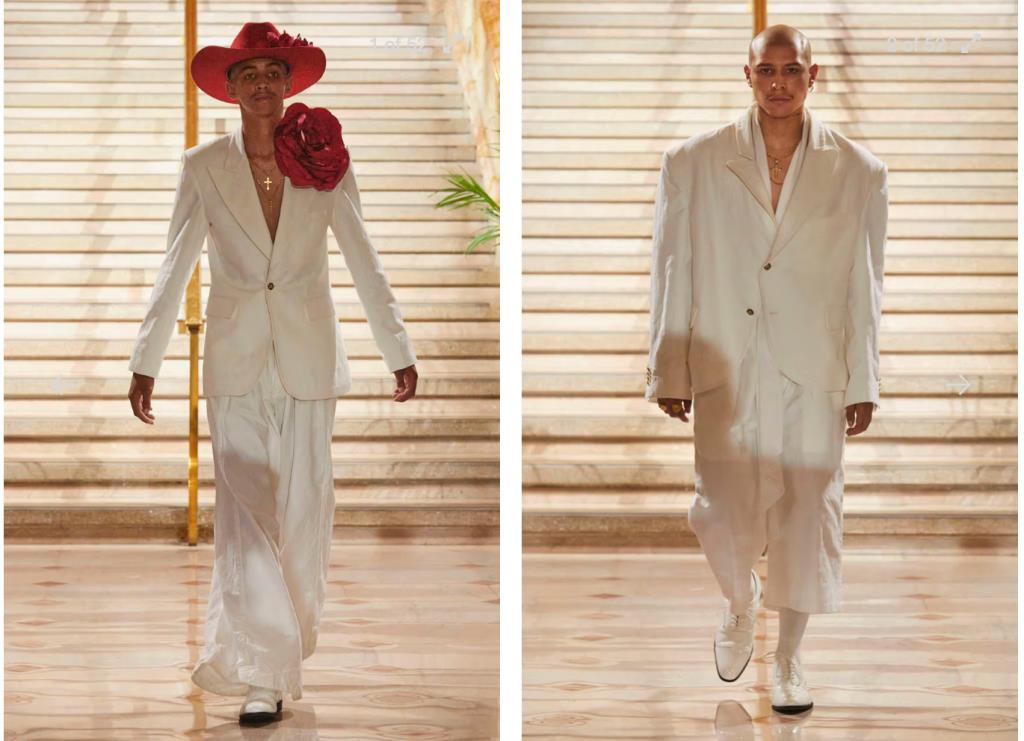
Willy Chavarria SS 2024 (Image Credit: Selwyn Tungol for Hypebeast.com)
Chavarria was born to an Irish-American mother and a Mexican-American father in Fresno, California. He studied graphic design at the Academy of Art University in San Francisco, and through an internship in the shipping department at Joe Boxer, worked his way up to a design position. He later assumed the designer role for Voler, a cycling and multi-sport apparel company and then for RLX, Ralph Lauren’s diffusion cycling brand. Chavarria often mixes his own cultural influences with street influences and combines them with elegant tailoring references of the ’30s and ’40s. His designs often comment on the American dream and reference the Pachuco style (the name given to Mexican Americans who wore zoot suits — baggy dress pants and long-tailed coats during the 1940s while facing violence in Los Angeles and San Antonio). Chavarria’s fame has netted him clients like Bad Bunny and his current role as Senior Vice President of Design at Calvin Klein.
Patricio Campillo – Mexico City, Mexico
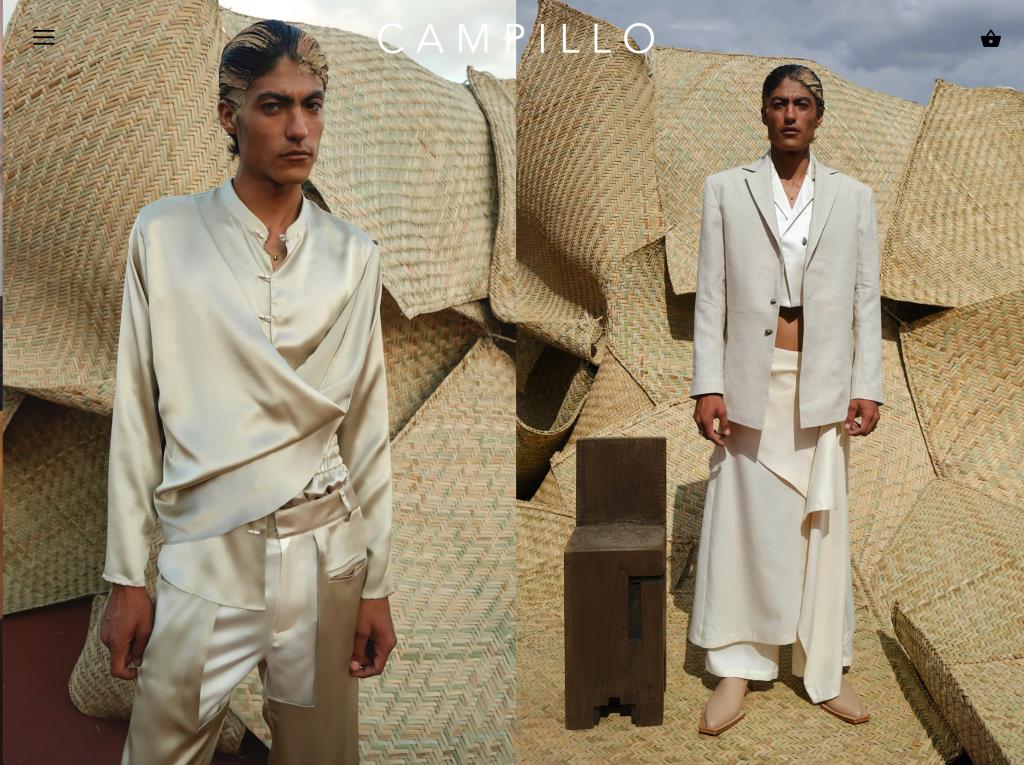
Patricio Campillo collection 2024 (Image Credit: PatricioCampillo.com)
Patricio Campillo was born and raised in Mexico City, Mexico. With degrees in communication and marketing he worked in the Parisian luxury market before founding his menswear brand in 2017. Campillo’s designs are influenced by childhood experiences, the contemporary Mexican artistic wave and traditional Charro culture (iconic Mexican cowboys). His collections recontextualize Mexican cultural heritage with a focus on sustainable practices. Campillo was a semi-finalist for the 2024 LVMH Prize and he will make his NYFW runway debut on Sept. 7, 2024.
Dayana Molina, Nalimo – Brazil
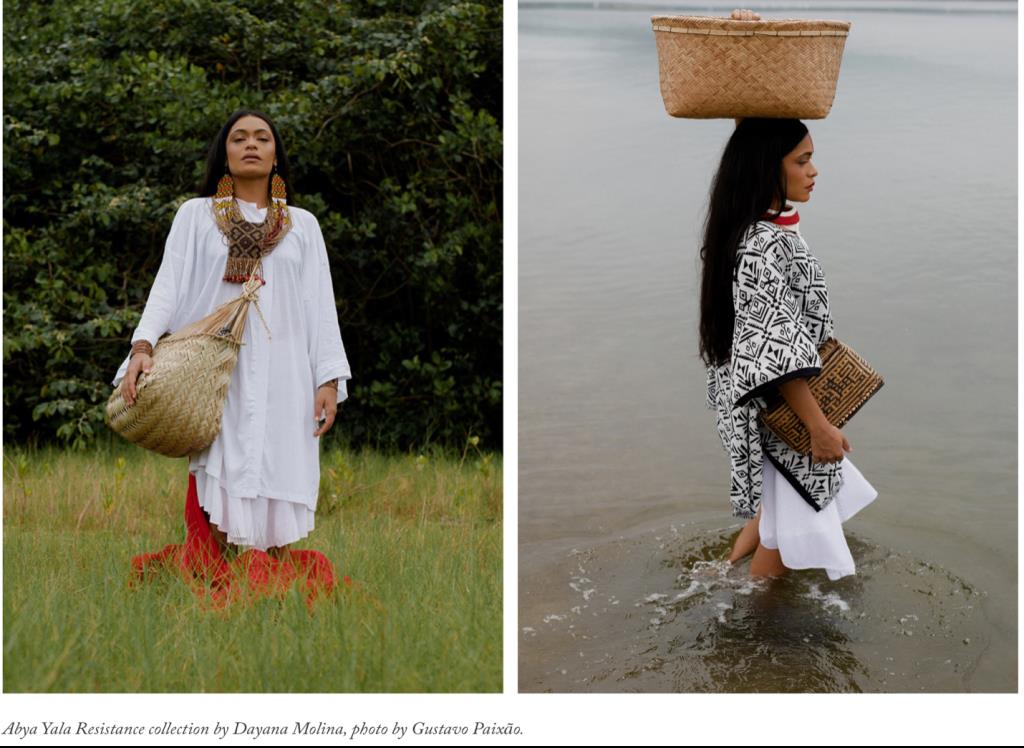
Dayana Molina is a descendant of the Fulni-ô tribe in Northeast Brazil and the Aymara ethnicities in Peru. Before her foray into fashion design, Dayana launched Brazil’s first indigenous culture magazine, Oka. In 2017, she launched her brand Nalimo, drawing inspiration from her Indigenous heritage, creating fashion pieces that challenge established norms, such as redefining gender roles and celebrating diverse body types, all from a decolonial perspective. In Dayana Molina’s words, “fashion is a potent political statement.” Through her activist brand, she exemplifies collaboration and inclusivity. Her mission is to empower women at every production stage, in fact, her entire team consists of women, including Indigenous women, single mothers, LGBTQI+ individuals, and more, all working together to shape a vision of a more equitable and sustainable future. Molina is also known for creating the #decolonizeamoda movement, inspiring structural changes in the global fashion marketplace.
So, tell us, have you ever used your heritage as inspiration in your designs?
REMINDER:
Don’t forget to take advantage of our UoF Back-to-School promo
Learn from 13 learning disciplines – 550 videos
Get $40 off a yearly subscription – was $220/now $180
Offer EXPIRES 10.1.2024
Use Promo Code: SCHOOL
Scan takes you to UoF Sign-up page
-------------------------------------
By: Francesca Sterlacci
Title: Celebrating Hispanic & Latino Fashion Designers – The Newbies
Sourced From: www.universityoffashion.com/blog/celebrating-hispanic-latino-fashion-designers-the-newbies/
Published Date: Sat, 21 Sep 2024 23:05:04 +0000
Read More
 FestivalsMusicNew ReleasesArtistsFashion & ClothingVideosPrivacy PolicyTerms And Conditions
FestivalsMusicNew ReleasesArtistsFashion & ClothingVideosPrivacy PolicyTerms And Conditions
